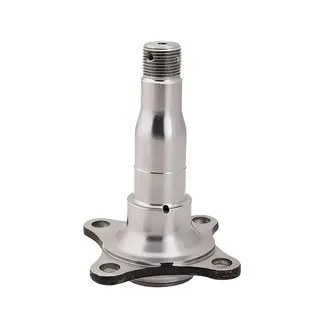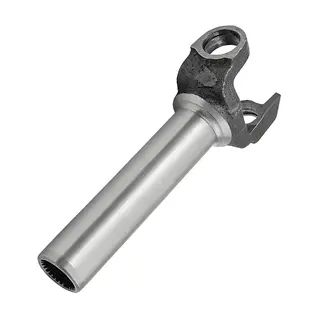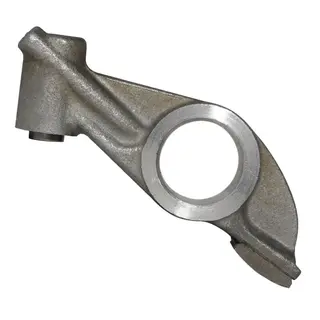In modern industrial manufacturing, non-ferrous metal forging technology plays a crucial role. Whether in aerospace, automotive manufacturing, or mechanical engineering, non-ferrous metal forgings are widely used due to their unique properties. This article will delve into non-ferrous metal forging technology, especially the forging points of aluminum alloys, magnesium alloys, titanium alloys, and copper alloys, to help readers gain a comprehensive understanding of this complex and intricate manufacturing process.
Aluminum alloys are widely used in the industrial field due to their lightweight, high strength, and good corrosion resistance. There are various types of aluminum alloy forgings, including free forging, die forging, upsetting, roll forging, and hole expansion. However, forging aluminum alloys is not an easy task. In particular, the deformation resistance of high-strength aluminum alloys increases sharply with the decrease in temperature. Therefore, to reduce deformation resistance, the forging process should be carried out at a higher temperature and with a greater degree of deformation.
The billets used for aluminum alloy forging mainly include ingots, forging blanks, and extruded billets. Before free forging to manufacture forgings or forging blanks, ingots must undergo homogenization treatment to ensure material uniformity. Forging blanks are mainly used for manufacturing large die forgings, while extruded billets (bars or profiles) are used for die forging. When using extruded billets as forging billets, the extruded ingot must be subjected to high-temperature homogenization treatment before extrusion. After extrusion, the billet needs to be repeatedly upset to eliminate the extrusion effect. For forgings with high performance requirements, the forging billet after extrusion also needs to be turned to remove surface defects.
The cutting of aluminum alloy billets is usually carried out using a saw, lathe, or milling machine, and sometimes a shear machine is also used, but grinding wheel cutting is absolutely not allowed as it may damage the billet surface. Aluminum alloys are generally forged in a hot state. When heating, high-temperature loading into the furnace can be used, but the heating time needs to be longer to ensure that the strengthening phase is fully dissolved to obtain a homogenized structure. However, the heating temperature should not be too high, otherwise, harmful gases (such as hydrogen) may damage the surface quality of the ingot, or problems such as overheating and overburning may occur. After the ingot is heated to the forging temperature, it must be kept warm. Whether forging blanks and extruded billets need to be kept warm depends on whether cracks will occur during the forging process.
The initial forging temperature of high-strength aluminum alloys is slightly higher, which may cause overburning. Therefore, the final forging temperature must not be lower than the recrystallization temperature, otherwise, it will lead to increased deformation resistance and work hardening. During the forging process, due to the high friction coefficient and poor fluidity of aluminum alloys at high temperatures, forgings are more sensitive to cracks. Therefore, when selecting the parting surface, not only should factors such as metal filling the die cavity, removing forgings, and die forging deformation force be considered, but also the uniformity of deformation should be paid special attention to in order to avoid the generation of cracks. For forgings with complex shapes, it is usually necessary to use multiple sets of molds and multiple die forging methods to gradually transition from simple-shaped blanks to complex-shaped forgings, thereby reducing the unevenness of deformation. During the forging process, in order to reduce the impact of the high friction coefficient and poor fluidity of aluminum alloys at high temperatures, lubrication of the contact surface between the ingot and the tool is usually required. Aluminum alloy die forging generally uses a mixture of water and colloidal graphite as a lubricant, and for die forgings with complex shapes, a small amount of soap is also added. In addition, lubricants made of a mixture of engine oil and graphite can also be used. When mixing, the amount of engine oil is generally 80% to 90%, and for large pieces or die forgings with simple shapes, the amount of engine oil is generally 70% to 80%.
The finishing of aluminum alloy forgings mainly includes trimming and removing defects such as folding, cracking, and scaling. Except for ultra-hard aluminum alloys, finishing is usually carried out in a cold state. When shearing, large die forgings are generally processed using a saw.
Magnesium alloys are highly favored in the fields of aerospace and automotive manufacturing due to their lightweight and good vibration damping properties. However, the plasticity of magnesium alloys is greatly affected by the deformation rate within the forging temperature range, so forging is usually carried out on a press. Magnesium alloys are very sensitive to tensile stress and should not be forged by upsetting or drawing on a flat anvil, otherwise, cracks may occur due to excessive tensile stress.
For magnesium alloy forgings with simple shapes and a total degree of deformation not exceeding 35%, one-time die forging can be used. For forgings with complex shapes and a total degree of deformation exceeding 40%, two or more forming operations are required.
During magnesium alloy forging, lubricants are usually used, such as a mixture of mineral oil (engine oil or cylinder oil) and fine graphite powder with a ratio of 80:20, or a mixture of oleic acid and paraffin with a ratio of 90:10. The forging temperature range of magnesium alloys is between 320 and 450 degrees Celsius. When heating, the holding time should not exceed 4 hours, otherwise, the plasticity and mechanical properties of magnesium alloys will be reduced. This is because the softening of magnesium alloys during heating cannot be compensated by subsequent forging and heat treatment. Since magnesium alloys have good thermal conductivity, they are prone to cooling and cracking when in contact with a cold mold, so the mold must be preheated, generally to 250 to 300 degrees Celsius, or even higher. To prevent trimming cracks, hot trimming should be carried out at 200 to 300 degrees Celsius.
Titanium alloys are widely used in the fields of aerospace and medical devices due to their high strength, low density, and good corrosion resistance. Titanium alloys have sufficient plasticity and can be used for free forging, die forging, and extrusion. However, titanium alloys have a high deformation resistance, which increases sharply with the decrease in temperature. This makes it difficult for titanium alloys to fill the die cavity and they are prone to sticking to the mold.
All defects on titanium alloy billets must be removed by turning or grinding. Free forging billets need to be skinned by 3 to 5 millimeters, and extruded billets need to be skinned by 2 to 3 millimeters. Cutting can be done by cold cutting on a lathe, grinding wheel cutting machine, or anode cutting machine, or by hot cutting on a shear machine at a temperature of 750 to 900 degrees Celsius, but gas cutting is absolutely not allowed.
When heating titanium alloys, there are strict requirements for heating temperature, heating speed, holding time, and the atmosphere inside the heating furnace. To reduce oxidation, the time spent at high temperatures should be the shortest time required to heat through the entire cross-section. The forging temperature for alpha titanium alloys and alpha-plus-beta titanium alloys is generally carried out in the alpha-plus-beta phase region. Common lubricants used in titanium alloy forging include mixtures of colloidal graphite and water, heavy oil or engine oil and graphite, and mixtures of graphite and molybdenum disulfide. For titanium alloys with higher heating temperatures, glass coatings can be used as lubricants.
Copper alloys are widely used in the fields of electrical, mechanical, and chemical engineering due to their good electrical conductivity, thermal conductivity, and corrosion resistance. The main copper alloys that can be forged are brass, bronze, and cupronickel. For forging brass, the zinc content is generally below 32%; for aluminum bronze, the aluminum content is around 8% to 10%.
Copper alloys can be forged on a forging hammer, but an increase in deformation speed will increase their deformation resistance. Therefore, it is best to carry out die forging on a press. In addition, copper alloys that can be forged can all be rolled into ring-shaped parts on a hole expansion machine.
During the forging process, the working tools and molds generally need to be preheated to 200 to 300 degrees Celsius to prevent heat loss from the billet. When die forging, the mold needs to be lubricated, usually using a mixture of colloidal graphite and water or oil as a lubricant.
Non-ferrous metal forging technology is a complex and intricate manufacturing process involving various materials and technical points. Aluminum alloys, magnesium alloys, titanium alloys, and copper alloys each have their unique properties and forging requirements. By gaining a deep understanding of the characteristics of these materials and the corresponding forging processes, the quality and performance of forgings can be effectively improved to meet the needs of different industrial fields. Whether it is the high-strength requirements of aerospace or the lightweight requirements of automotive manufacturing, non-ferrous metal forging technology plays an indispensable role. It is hoped that the introduction of this article will help readers better understand and apply non-ferrous metal forging technology to promote the development of related industries.



